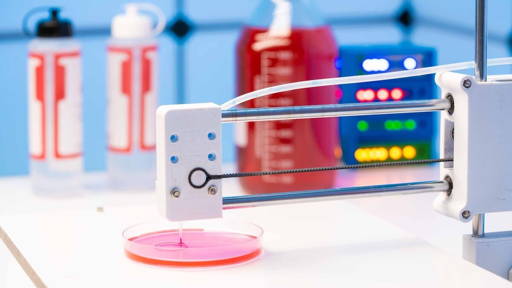An international team of scientists and researchers has developed a smart skin sensor for real-time monitoring of skin temperature. That sensor is incorporated into a device that uses this measurement data to detect temperature fluctuations that indicate the presence of inflammation and infections. What is special is that the device developed for this purpose uses a thermoelectric system and therefore does not require a battery or external power supply.
The smart skin sensor was developed as part of a European project, led by researchers at the Universitat Rovira i Virgili (URV) in Spain, in collaboration with researchers at the University of Porto working on renewable energy systems. The goal of this research was to increase the autonomy of sensors used in medical and industrial environments. “The idea was to not depend on batteries and to make flexible devices that can be adapted to the skin or other surfaces,” explains Eduard Llobet, researcher at URV's Department of Electronics, Electrical Engineering and Automation.
Skin temperature as an indicator
Skin temperature is an essential indicator for the early diagnosis of wounds and inflammatory processes in the skin. Local variations in temperature can reveal infections, complications in healing or other changes that adversely affect a patient's health. Currently, an infrared camera or so-called point sensors are still used for diagnosis. The disadvantage of this method is that it requires patients to be immobilized. Moreover, these methods do not allow monitoring the entire skin surface.
The smart skin sensor device now being developed can accurately measure small changes in temperature. For this purpose, it uses the semiconductor materials that generate an electrical signal when they detect temperature differences. In this way, a thermal map of the skin can be created, so to speak, showing any problem areas in real time.
The device has been validated through simulations and experimental tests on human skin, even under sweaty conditions using a saline solution to simulate perspiration. The tests have shown that temperature variations of as little as 0.4°C can be detected and that the smart skin sensor responds to temperature changes in less than three seconds. This allows real-time monitoring of wound development and rapid detection of signs of infection. The results of the project and research were published in the journal Advanced Science.
Easy to use
According to the researchers, the smart skin sensor is not only durable, in part because it requires no energy sources for operation, but also very simple to use. “The system can display a color map of temperature gradients. Fit means healthcare personnel can quickly identify affected areas even without training,” Llobet said. The sensor can be used not only to prevent infections in surgical wounds and bedsores, but can also be adapted for other applications such as monitoring inflammatory processes.
Meanwhile, the research team is already working on new projects to further expand the functionality of the smart skin sensor. These include incorporating biosensors to measure other physiological variables, such as levels of dissolved gases or specific biomarkers. “Our idea is to further develop this technology to make it even more versatile and useful in the clinical setting,” the researchers said.
Smart sensors
Using smart, wearable, sensors for medical diagnosis and monitoring is not new. Some time ago, for example, researchers at Northwestern University developed a wearable sensor, powered by AI, to reduce nighttime scratching in people with atopic dermatitis. The device detects itching and provides vibration feedback to stop scratching. In a test on 10 participants, the number of scratching moments reduced by 28%, and the duration of scratching decreased from 15.8 to 7.9 seconds.
And back in 2019, British researchers developed a technology in which smart sensors monitor the healing of wounds by “listening” for vibrations in the tissue. These sensors, the size of a grain of sugar, could detect changes in damaged tissue, allowing the healing process to be monitored more accurately without having to remove bandages. That research used pig skin and advanced 3D imaging to study the skin's responses to wounds, potentially improving wound treatment and monitoring.









